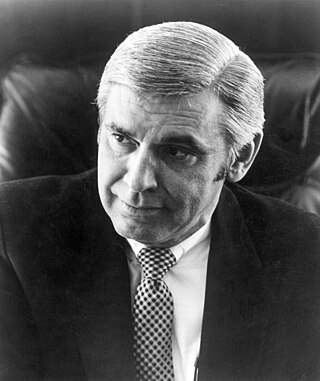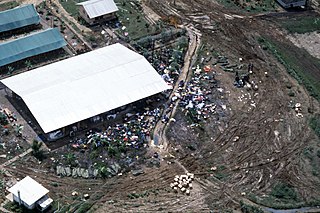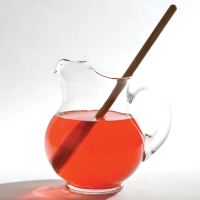
The Peoples Temple of the Disciples of Christ, originally Peoples Temple Full Gospel Church and commonly shortened to Peoples Temple, was an American new religious organization which existed between 1954 and 1978 and was affiliated with the Christian Church. Founded by Jim Jones in Indianapolis, Indiana, the Peoples Temple spread a message that combined elements of Christianity with communist and socialist ideology, with an emphasis on racial equality. After Jones moved the group to California in the 1960s and established several locations throughout the state, including its headquarters in San Francisco, the Temple forged ties with many left-wing political figures and claimed to have 20,000 members.

The Peoples Temple Agricultural Project, better known by its informal name "Jonestown", was a remote settlement in Guyana established by the Peoples Temple, an American cult under the leadership of Jim Jones. Jonestown became internationally infamous when, on November 18, 1978, a total of 918 people died at the settlement, at the nearby airstrip in Port Kaituma, and at a Temple-run building in Georgetown, Guyana's capital city. The name of the settlement became synonymous with the incidents at those locations.

James Warren Jones was an American cult leader and mass murderer who led the Peoples Temple between 1955 and 1978. In what he termed "revolutionary suicide", Jones and the members of his inner circle planned and orchestrated a mass murder-suicide in his remote jungle commune at Jonestown, Guyana, on November 18, 1978. Jones and the events that occurred at Jonestown have had a defining influence on society's perception of cults.

Leo Joseph Ryan Jr. was an American teacher and politician. A member of the Democratic Party, he served as the U.S. representative from California's 11th congressional district from 1973 until his assassination during the Jonestown massacre in 1978. Before that, he served in the California State Assembly, representing the state's 27th district.

Potassium cyanide is a compound with the formula KCN. It is a colorless salt, similar in appearance to sugar, that is highly soluble in water. Most KCN is used in gold mining, organic synthesis, and electroplating. Smaller applications include jewellery for chemical gilding and buffing. Potassium cyanide is highly toxic, and a dose of 200 to 300 milligrams will kill nearly any human.

Flavor Aid is a non-carbonated soft drink beverage made by The Jel Sert Company in West Chicago, Illinois. It was introduced in 1929 and sold throughout the United States as an unsweetened, powdered concentrate drink mix, similar to Kool-Aid brand drink mix.
These are lists of poisonings, deliberate and accidental, in chronological order by the date of death of the victim(s). They include mass poisonings, confirmed attempted poisonings, suicides, fictional poisonings and people who are known or suspected to have killed multiple people.

Mass suicide is a form of suicide, occurring when a group of people simultaneously kill themselves.
Don Harris was an NBC News correspondent who was killed after departing Jonestown, an agricultural commune owned by the Peoples Temple in Guyana. On November 18, 1978, he and four others were killed by gunfire by Temple members at a nearby airstrip in Port Kaituma, Guyana. Their murders preceded the death of 909 Temple members in Jonestown and four Temple members in Georgetown, Guyana.
"Drinking the Kool-Aid" is the ninth episode of the first season of the American mystery television series Veronica Mars. The episode's teleplay was written by Russell Smith, from a story by series creator Rob Thomas, and was directed by Marcos Siega, the episode premiered on UPN on November 30, 2004.

Jonestown: The Life and Death of Peoples Temple, is a 2006 documentary film made by Firelight Media, produced and directed by Stanley Nelson. The documentary reveals new footage of the incidents surrounding the Peoples Temple and its leader Jim Jones who led over 900 members of his religious group to a settlement in Guyana called Jonestown, where he orchestrated a mass suicide with poisoned Flavor Aid, in November 1978. It is in the form of a narrative with interviews with former Temple members, Jonestown survivors, and people who knew Jones.

Cyanide poisoning is poisoning that results from exposure to any of a number of forms of cyanide. Early symptoms include headache, dizziness, fast heart rate, shortness of breath, and vomiting. This phase may then be followed by seizures, slow heart rate, low blood pressure, loss of consciousness, and cardiac arrest. Onset of symptoms usually occurs within a few minutes. Some survivors have long-term neurological problems.

Kool-Aid is an American brand of flavored drink mix owned by Kraft Heinz based in Chicago, Illinois. The powder form was created by Edwin Perkins in 1927 based upon a liquid concentrate named Fruit Smack.

The Peoples Temple, the new religious movement which came to be known for the mass killings at Jonestown, was headquartered in San Francisco, California, United States from the early to mid-1970s until the Temple's move to Guyana in 1977. During this period, the Temple and its founder, Reverend Jim Jones, rose to national prominence thanks to Jones' interest in social and political causes, and wielded a significant amount of influence in San Francisco's city government.

Jonestown is an album by Canadian hip hop artist D-Sisive. Released in 2009, the album was D-Sisive's second full-length release that year after Let the Children Die, and was made available for a free digital download. The album art features a jug of Kool-Aid, an allusion to the phrase "drinking the Kool-Aid", which is associated with the 1978 Jonestown mass murder–suicide.

Last Call in Jonestown is the third studio album by Polkadot Cadaver, released on May 14, 2013.
"Drink the Kool-Aid" is the ninth episode of the seventh season of the anthology television series American Horror Story. It aired on October 31, 2017, on the cable network FX. The episode was written by Adam Penn, and directed by Angela Bassett.
Jim Jones was a cult leader who on November 18, 1978, orchestrated the mass murder suicide of 909 members of his commune in Jonestown, Guyana. Since the events of the Jonestown Massacre, a massive amount of literature and study has been produced on the subject. Numerous documentaries, films, books, poetry, music and art have covered or been inspired by the events of Jonestown. Jim Jones and the events at Jonestown has had a defining influence on society's perception of cults. The widely known expression "Drinking the Kool-Aid" originated in the events at Jonestown, although the specific beverage used at the massacre was Flavor Aid rather than Kool-Aid.
Christine Miller was a member of the Peoples Temple cult led by Jim Jones. She is known for being the only Temple member to publicly urge Jones against carrying out the group's mass murder in Jonestown, Guyana on November 18, 1978. Ultimately, she was unsuccessful in persuading Jones and died that same day, alongside 908 other Temple members.
Maria Katsaris was a member of the Peoples Temple cult led by Jim Jones. She is known for being one of the most high-ranking figures in Temple leadership and one of Jim Jones' lovers.














